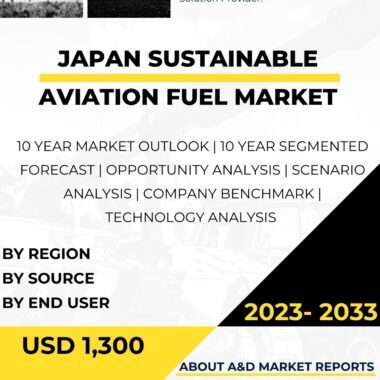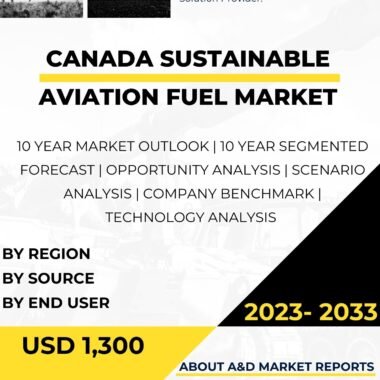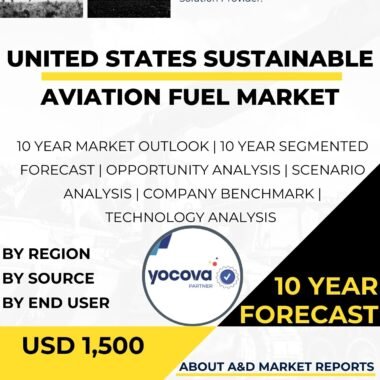Description
South Korea Sustainable Aviation Fuel Market Overview
The Sustainable Aviation Fuel Market is an important part of the country’s aviation sector. It offers a cleaner alternative to traditional jet fuel. Sustainable aviation fuel, often called SAF or biojet fuel, comes from renewable sources. It helps reduce carbon emissions from aircraft.
South Korea supports SAF to lower the environmental impact of aviation. Innovation and partnerships continue to drive market growth.
Role of Sustainable Aviation Fuel in Aviation
Aviation supports trade, tourism, and connectivity in South Korea. However, aircraft emissions affect air quality and climate change. Sustainable aviation fuel helps address these challenges.
Environmental Benefits of SAF
SAF can reduce lifecycle carbon emissions compared to conventional fuel. It works with existing aircraft and airport systems. This makes adoption easier for airlines.
Indigenous Development in the South Korea Sustainable Aviation Fuel Market
Domestic research into sustainable aviation fuel is expanding. South Korea invests in renewable energy and cleaner fuel solutions. Government agencies work closely with private companies.
These efforts support long-term sustainability goals.
Adoption of SAF by the Aviation Sector
Airlines in South Korea have started using sustainable aviation fuel on select routes. SAF use lowers emissions and shows commitment to greener operations. This shift aligns with international climate targets.
The South Korea sustainable aviation fuel market continues to gain industry support.
Key Feedstocks Used for Sustainable Aviation Fuel
Used Cooking Oil as a Feedstock
Used cooking oil is a major SAF feedstock in South Korea. It is collected from restaurants and food facilities. The oil is converted into biojet fuel using advanced processes.
This approach reduces waste and supports a circular economy.
Camelina Oil for SAF Production
Camelina oil is another important feedstock. Camelina grows on marginal land and needs fewer resources. It does not compete with food crops.
Its use supports farming communities and lowers fuel carbon intensity.
Strategic Partnerships and Supply Chain Development
Partnerships help strengthen the SAF supply chain. Collaboration enables technology sharing and stable fuel supply. These efforts support market reliability and scale-up.
Government Policies Supporting SAF Adoption
South Korea promotes SAF through supportive policies. These include tax benefits and research funding. Carbon reduction programs also encourage airline participation.
Government support accelerates market adoption.
Safety and Performance Standards
Safety remains a top priority in the SAF market. Sustainable aviation fuel must meet strict fuel standards. It must perform safely in existing aircraft engines.
South Korea follows international aviation fuel quality guidelines.
Conclusion
The South Korea sustainable aviation fuel market plays a key role in reducing aviation emissions. Local development, policy support, and partnerships drive progress. Renewable feedstocks such as used cooking oil and camelina oil strengthen sustainability efforts.
As aviation focuses more on cleaner solutions, South Korea’s continued investment in sustainable aviation fuel will support long-term environmental goals and a greener aviation future.




